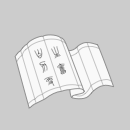
文学语言与人物塑造的语料库语言学研究方法:析弗吉尼亚·伍尔夫的《海浪》 9787544648868
新华书店正版图书,可开发票,请放心购买。
¥ 48.4 7.3折 ¥ 66 全新
仅1件
作者(意)朱赛皮娜·巴洛西
出版社上海外语教育出版社
ISBN9787544648868
出版时间2019-04
装帧平装
开本16开
定价66元
货号1201924292
上书时间2024-09-28
- 最新上架
商品详情
- 品相描述:全新
- 商品描述
-
目录
Acknowledgements
Foreword
List of conventions
List of figures and tables
List of appendixes
List of concordances
CHAPTER 1 Introduction
1.1 The issues at stake
1.2 The design of this book
CHAPTER 2 Virginia Woolfs The Waves
2.1 Virginia Woolf and the modernist character
2.2 Introduction to The Waves
2.2.1 Conception
2.2.2 Structure
2.2.3 Method of characterization
2.2.4 Debate over characterization
2.2.5 Studies on lexical patterns
2.2.6 Psychoanalytic approaches to character
CHAPTER 3 Literature review
3.1 The state of affairs in literary characterization
3.1.1 Characters as people and as textual constructs
3.1.2 Character typologies
3.2 Psychological concepts in the perception of personality
3.2.1 Prior knowledge and schema theory
3.2.2 History of schema theory
3.3 Stylistic approaches to characterization
3.3.1 Culpepers model for characterization: Top-down and bottom-up
3.3.2 Cognitive metaphor, mind style and characterization
3.4 Studies of language and personality
3.5 Conclusion
CHAPTER 4 Corpus approaches to the study of language and literature
4.1 Introduction
4.2 Corpus annotation
4.3 Techniques employed in corpus analyses
4.4 Corpus annotation of literary texts
4.4.1 Quantitative stylistic approaches to literary texts
4.4.2 Authorial style
4.4.3 Characterization
4.4.3.1 Characterization in The Waves
CHAPTER 5 Methodology
5.1 Introduction
5.2 The narrative framework of The Waves
5.2.1 Synchronic and diachronic structure
5.2.2 The Waves as e-text: Text annotation and text division
5.3 Wmatrix: A software tool for corpus analysis and comparison
5.3.1 The CLAWS and USAS taggers and their tagsets
5.4 The Waves through Wmatrix
5.4.1 Adaptation and revision of POS and USAS tagsets
5.4.2 Data layout in Microsoft Excel
5.4-3 Post-editing of the soliloquy text
5.4.4 Token count of the soliloquy text
CHAPTER 6 Character differentiation through word-dasses
6.1 Introduction
6.2 Word-dass and characters language
6.2.1 Word-classes in the whole soliloquy text and in each character
6.2.2 Data comparison and treatment of the LL statistics
6.2.3 Characters word-classes in each phase of life:Significant differences relative to each character
a. Susan
b. Jinny
c. Rhoda
d. Louis
e. Neville
f. Bernard
6.2.4 Bernards word-classes in the final soliloquy
6.3 Summary
CHAPTER 7 Character differentiation: Semantic fields
7.x Introduction
7.2 Data comparison and treatment of the LL statistics
7.3 The characters schema of gender dichotomy
7.4 The female characters
7.4.1 Susan
a. The Natural World
b. The House
c. Home-making activities
d. Family and Motherhood
e. Time
f. The Senses
7.4.2 Jinny
a. The Body
b. Colours
c. Movement
7.4.3 Rhoda
a. The Natural World
b. Movement
c. Emotions
d. Shapes
e. Colours
7.5 The female characters semantic fields and personality traits
7.6 The male characters
7.6.1 Louis
a. Geographical names
b. People and Relationships
c. The Natural World
d. History and Literature
7.6.2 Neville
a. Literature and Philosophr
b. Academic Interests
7.6.3 Bernard
a. Cognition and Abstraction
b. Intellectual Interests
7.7 The male characters semantic fields and personality traits
7.8 Bernards final summing-up and his dramatic role
7.9 Conclusion: The characters semantic fields and their personality traits
7.10 Percival: The other-presented character
CHAPTER 8 Conclusion
8.1 Achievements
8.2 Characterization in this study
8.3 Reading through the computer
8.4 Authorial style versus character voice
8.5 Further directions
References
Websites
Appendixes
Author index
Subject index
内容摘要
本书采用定量和定性相结合的方法,从历时和共时的角度,以弗吉尼亚·伍尔夫的小说《海浪》为文本,使用计算机软件技术对其中六个人物的语言在语法和语义方面进行了分析。该方法可运用于语言学、文体学、文学等领域的研究,也可运用于非文学语言文本的人物心理研究。
相关推荐
-

新世纪英语语言文学界面研究丛书:文学语言与人物塑造的语料库语
全新广州
¥ 41.48
-

新世纪英语语言文学界面研究丛书:文学语言与人物塑造的语料库语
全新保定
¥ 20.79
-

老舍的文学语言风格与发展
九品北京
¥ 59.00
-

老舍的文学语言风格与发展
九品北京
¥ 60.00
-

老舍的文学语言风格与发展
九品北京
¥ 58.00
-

老舍的文学语言风格与发展
九五品菏泽
¥ 61.00
-

老舍的文学语言风格与发展
九品菏泽
¥ 60.00
-

老舍的文学语言风格与发展。。??
九五品菏泽
¥ 298.00
-

老舍的文学语言风格与发展,,,,,,
九五品菏泽
¥ 298.00
-

老舍的文学语言风格与发展,,,,,
九五品菏泽
¥ 298.00
— 没有更多了 —













以下为对购买帮助不大的评价